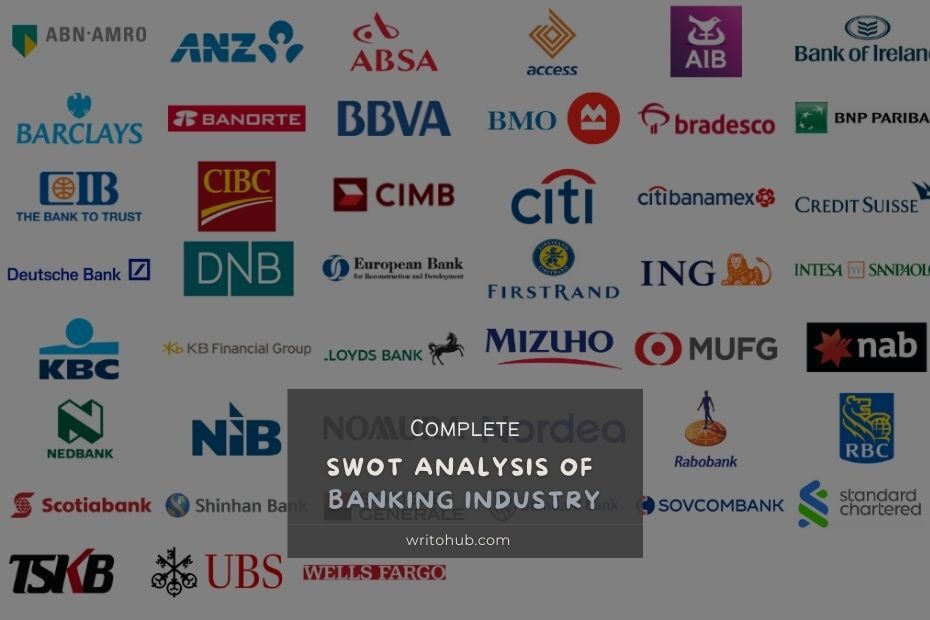The banking industry, a critical component of the global financial sector, faces a complex mix of strengths, weaknesses, opportunities, and threats.
A SWOT analysis of banking industry provides insights into its strategic position in the face of evolving market dynamics
Strengths in the SWOT Analysis of Banking Industry
- Stability and Trust: Banks are seen as stable financial institutions, fostering trust and confidence among depositors and investors.
- Diversified Services: Banks offer a wide range of financial services, including savings accounts, loans, investment products, and wealth management, catering to diverse customer needs.
- Regulatory Oversight: Stringent regulatory oversight ensures the safety and soundness of banks, providing a level of security for customers.
- Global Reach: Major banks have a global presence, facilitating international trade and financial transactions.
- Technological Advancements: Banks have embraced technology, offering online and mobile banking, which enhances convenience and accessibility.
Weaknesses in the SWOT Analysis of Banking Industry
- Cybersecurity Risks: The industry is vulnerable to cyberattacks, data breaches, and financial fraud, potentially eroding customer trust.
- Compliance Costs: Meeting regulatory requirements is costly and time-consuming, affecting profitability.
- Legacy Systems: Some banks still rely on outdated legacy systems, hindering agility and innovation.
- Interest Rate Sensitivity: Banks are sensitive to fluctuations in interest rates, impacting their net interest margins.
- Market Saturation: In some regions, the banking industry is highly saturated, leading to intense competition and pricing pressures.
Opportunities in the SWOT Analysis of Banking Industry
- Fintech Collaboration: Partnering with fintech companies can enhance digital offerings and improve customer experience.
- Digital Transformation: Embracing digitalization can reduce operational costs, improve efficiency, and enhance customer service.
- Financial Inclusion: Expanding banking services to underserved populations can tap into new markets and promote financial inclusion.
- Sustainable Finance: Integrating environmental, social, and governance (ESG) principles into banking practices aligns with evolving consumer values.
- Global Expansion: Exploring emerging markets can diversify revenue sources and tap into growing economies.
Threats in the SWOT Analysis of Banking Industry
- Economic Downturns: Economic recessions can lead to increased loan defaults, impacting banks’ asset quality and profitability.
- Regulatory Changes: Evolving regulations can require costly compliance measures and impact business models.
- Fintech Disruption: Fintech companies pose a competitive threat by offering innovative and often lower-cost financial services.
- Cybersecurity Threats: Increasing cyber threats can lead to financial and reputational damage.
- Interest Rate Volatility: Fluctuations in interest rates can impact banks’ profitability and lending activity.
Conclusion
The banking industry’s SWOT analysis reflects its position as a crucial sector in the global economy.
To thrive in this ever-changing landscape, banks must leverage their strengths, address weaknesses, seize opportunities, and mitigate threats while adapting to evolving market dynamics and technological advancements.
